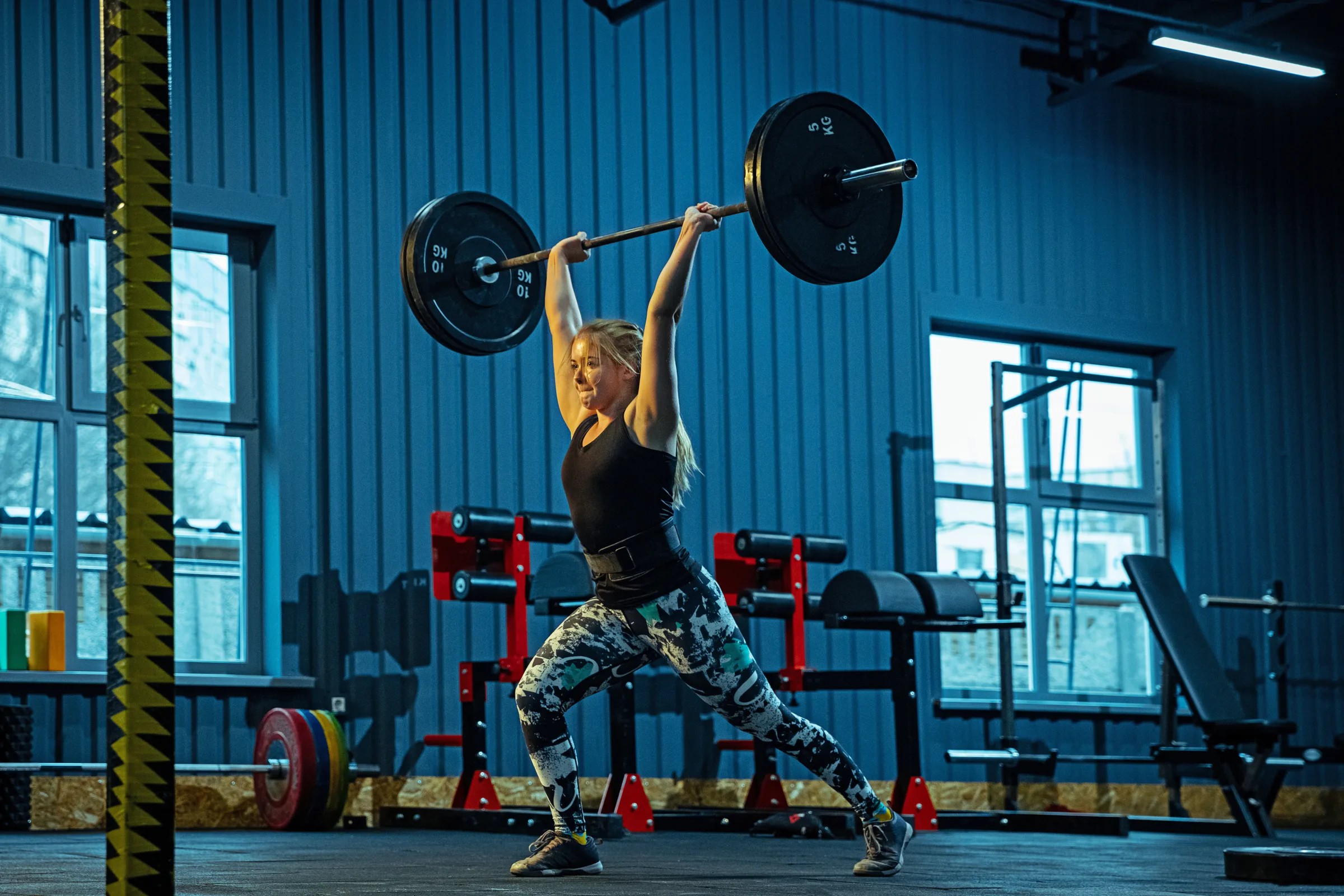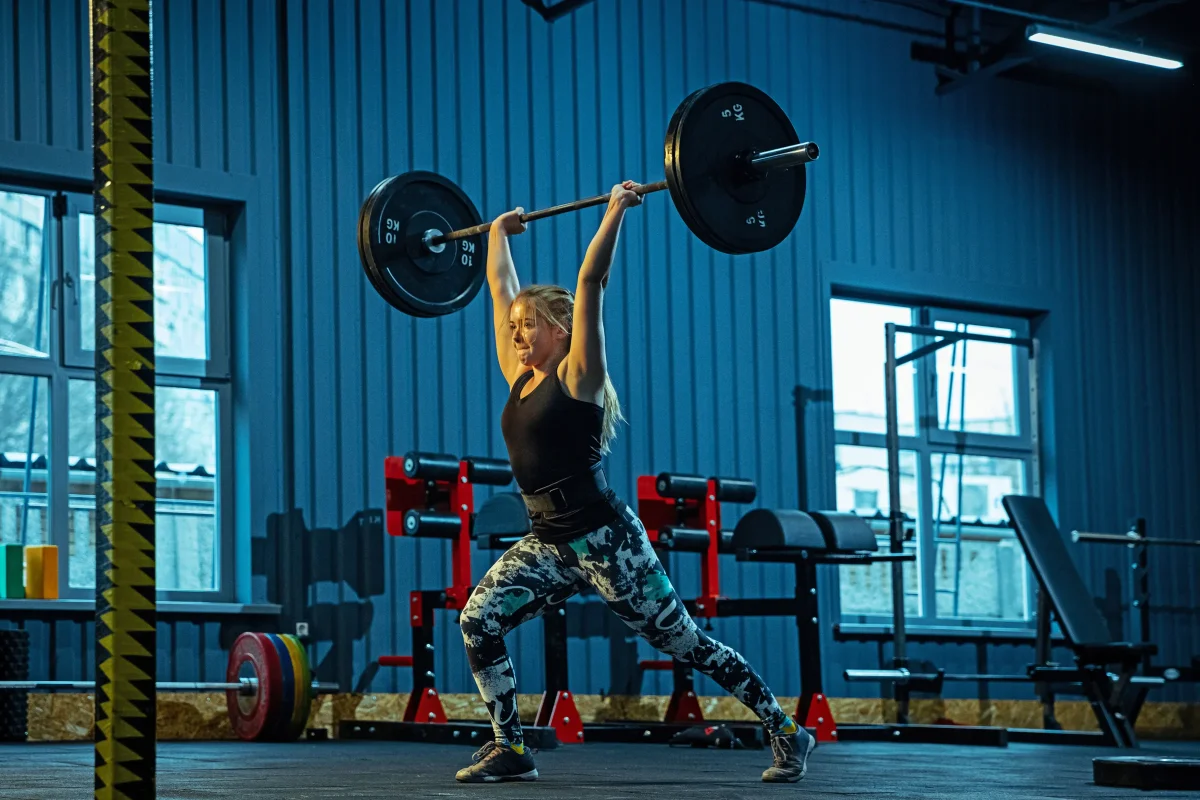Elevate Your Training: Top CrossFit Weightlifting Techniques


CrossFit weightlifting techniques have gained significant traction among fitness enthusiasts who value both functional capabilities and raw power. You might be exploring these methods to see how they differ from traditional weightlifting—and precisely how they can shape your personal progress. By examining movement fundamentals, injury prevention strategies, and how each method meshes with your goals, you can decide where to focus your efforts. Some athletes even consider topics like Testolone vs. Ligandrol when optimizing their routines, highlighting the variety of paths people take to advance their strength and conditioning.
CrossFit combines high-intensity intervals with full-body movements that challenge endurance, coordination, and explosive strength. Traditional weightlifting, by contrast, tends to revolve around targeted exercises that prioritize gradual overload and muscle development. The question is how these two approaches can complement each other or stand apart as you craft a plan that suits your needs. Before jumping into heavy lifts or dynamic circuits, take time to explore the factors that will propel you forward safely and effectively.
Assess Your Workout Goals
Your overall objectives play a large part in deciding whether you lean toward CrossFit or traditional lifting. Perhaps you aim to boost cardiovascular health and functional strength. Or maybe you’re determined to carve out significant muscle mass and hone specific lifts. Identifying your priorities in detail will make it easier to pick exercises and structure your weekly schedule.
- If you want to refine your power with well-known weightlifting staples such as the clean and jerk or snatch, CrossFit weightlifting techniques can help. These moves recruit multiple muscle groups and also push you to enhance coordination.
- If you’re aiming for pure hypertrophy or bone density improvements, a more traditional lifting routine that incorporates progressive overload might be ideal.
- If you’re curious about broader fitness discussions like Testolone vs. Ligandrol, it’s possible you’re exploring ways to supplement or accelerate your gains—but keep in mind that technique, safety, and consistency remain top priorities.
Certain individuals prefer to blend CrossFit workouts with weightlifting sessions, pursuing the best of both worlds. That variety can help avoid plateaus and may boost motivation by breaking up the monotony of single-track routines. As you figure out your sweet spot, pin down the insights needed to balance high-intensity functional training with the slower, targeted progression of traditional strength work.
Compare CrossFit And Weightlifting
While you might be familiar with how weightlifting involves deliberate sets and reps to develop strength, CrossFit’s approach is broader, incorporating cardio, bodyweight moves, and flexible programming. Recent research shows that more than 70% of CrossFit participants incorporate specific weightlifting drills as part of their overhead presses, deadlift training, or Olympic lifts. This underscores the close relationship between the two styles of exercise.
CrossFit tends to program functional movements that mirror real-world tasks. For instance, deadlifts help you pick up heavy objects, power cleans refine explosive leg drive, and box jumps enhance lower-body energy transfer. Weightlifting is not missing these benefits, but the focus is more specialized, targeting incremental increases in load or perfecting competitive lifts. By addressing each element of fitness—power, flexibility, endurance, and coordination—CrossFit aims to develop well-rounded athletes ready for a range of physical demands.
If you want to dig deeper into the distinctions, you can examine this crossfit vs weightlifting comparison, which shows why some individuals see these methods as complementary rather than rivals.
Explore Key Techniques
CrossFit weightlifting techniques revolve around dynamic lifts that blend strength, speed, and agility. Weightlifting itself also includes these movements, but the frequency and intensity in CrossFit might be higher or combined with cardio intervals. Below are a few cornerstones that define these methods:
Clean And Jerk
The clean and jerk is one of the most recognizable Olympic lifts, requiring swift force production from your legs, hips, and upper body. You pull the bar from the floor to your shoulders (clean), then drive it overhead (jerk). CrossFit uses it to build work capacity, while in traditional weightlifting, the focus is on perfecting each phase of the movement to lift heavier weights competitively. Strong clean and jerk form translates to daily tasks that call for lifting and pressing objects overhead.
Snatch Variations
From a power snatch, where you catch the bar in a partial squat, to a full squat snatch, where you drop lower to stabilize the load, the snatch demands high coordination. CrossFit encourages practicing segments of the snatch (like hang or power versions) to accommodate varying skill levels. In specialized weightlifting programs, your priority might be pushing for heavier attempts within a strict technique progression.
Deadlift Fundamentals
Deadlifts are universal in both CrossFit and traditional routines, but CrossFit sometimes calls for more repetitions at moderate weight, promoting metabolic conditioning while still cultivating strength. Weightlifting programs may treat the deadlift as an accessory to the clean and snatch, maintaining a narrower focus on technique and top-end power. Either way, the deadlift remains a classic measure of total-body pulling strength.
Accessory And Plyometric Exercises
Movements like kettlebell swings, box jumps, and pull-ups complement main lifts by improving explosive power, grip, and core stability. CrossFit typically integrates these into high-intensity workouts, mixing them with barbell exercises to create a full-spectrum challenge. Traditional weightlifting programs also rely on accessory work, but it often appears in smaller volumes with sets and reps tailored to refining a specific weakness.
Hook Grip And Barbell Cycling
The hook grip can stabilize your hold on the bar, preventing slippage and elevating both power and safety. In CrossFit, where rapid cycling through snatches or cleans is common, mastering this grip helps you maintain control through multiple reps. Traditional lifters use the hook grip too, though often in fewer, heavier reps.
Stay Safe And Progress
Avoiding injuries is essential whether your regimen orbits CrossFit weightlifting techniques or standard barbell work. Some participants progress too quickly in pursuit of heavier loads or faster times, which might overload the body. Staying safe and advancing methodically should be a cornerstone of your plan.
- Listen to your body. If a muscle group feels strained, pause and reassess.
- Build on solid foundations. Aim to perfect form before increasing intensity.
- Emphasize rest periods. Sleep and recovery prevent burnout and reduce potential risks.
- Consider professional guidance. A Doctor of Physical Therapy or an experienced coach can evaluate movement patterns and pinpoint specific areas needing improvement.
Regularly including mobility drills can also improve range of motion, reinforcing safer mechanics in lifts like the clean, jerk, and snatch. Steady progression sets you up for long-term gains in both style and substance, reducing setbacks that might occur if you push too far, too fast.
Check Emerging Trends
Olympic lifting within CrossFit continues to flourish. New programs tailor specialized sessions for those who hope to refine the snatch or clean and jerk while preserving the full-body metabolic demand of group workouts. Some experienced CrossFitters also pay attention to topics like Testolone vs. Ligandrol, exploring whether selective androgen receptor modulators (SARMs) can aid muscle growth or enhance recovery. While the research on these compounds covers a wide range of outcomes, your best bet is to focus first on consistent training and correct mechanics.
A recent study estimated that 65% of new CrossFit participants try an Olympic lifting progression within their first six months, showing that these movements remain a mainstay. One CrossFit Journal statement reads, “The magic is in the movements, the art is in the programming, and the science lies in the explanation.” That perspective underlines the importance of structuring each session so that crucial lifts mesh with the rest of your workout.
If you are looking to integrate the latest data into your approach, keep an eye on platforms that share performance metrics. Feedback from apps or heart rate monitors can guide you on when to dial up the intensity and when to step back. By gathering relevant data, you can adopt an evidence-driven approach that aligns with your unique goals.
Conclude With Action Steps
Your path toward bigger lifts or exclusive CrossFit workouts depends on your personal objectives and how your body responds to different training frequencies. Heavy Olympic lifts, high-intensity intervals, or a hybrid of the two can all propel strength, endurance, or muscle mass. Building a solid baseline in snatches, cleans, and jerks is particularly valuable if you enjoy the pace and versatility of CrossFit.
Consider these key actions:
- Hone Your Technique: Take time to practice smaller segments of each lift, such as the first pull in a snatch or the dip-and-drive portion of a jerk.
- Incorporate Periodic Assessments: Track progress every few weeks, noting gains in power or consistency.
- Weigh Supplements Mindfully: Some individuals debate Testolone vs. Ligandrol. But if you decide to use supplements or SARMs, proceed with caution, research thoroughly, and remember that strong fundamentals trump shortcuts.
- Commit To A Long Game: Both CrossFit and weightlifting require consistency, patience, and a collaborative approach with coaches or training partners.
For those ready to deepen their knowledge or refine performance, our partners at SarmsCentral.ca offer additional resources that may support your growth journey. Elevate your potential by maintaining safe practices, heeding proper technique, and building on each success steadily.
Answer Common Questions
What’s The Main Difference Between CrossFit And Traditional Weightlifting?
CrossFit involves a wide spectrum of functional workouts, incorporating techniques from gymnastics, powerlifting, and Olympic weightlifting, all blended into fast-paced sessions. Traditional weightlifting tends to concentrate on a smaller set of movements such as the snatch and clean and jerk, along with progressive overload exercises. If your priority is broad functional fitness, CrossFit might suit you. If you prefer focusing on precise barbell techniques with incremental progress, classic weightlifting is a solid choice.
Can You Combine Both For Better Results?
Yes, many athletes integrate both CrossFit and weightlifting. Mixing high-intensity circuits with targeted strength sessions can yield well-rounded athleticism. One approach is devoting certain days to technical lifts and other days to CrossFit-style conditioning. That way, you build strength and maintain endurance without sacrificing form.
How Important Is Technique For Safety?
Technique is vital for preventing injuries. Mastering a lift slowly and correctly is more valuable than adding weight prematurely. This is particularly true in CrossFit weightlifting techniques since workouts often push you to move quickly under fatigue. By honing form, you protect your joints and lay the groundwork for future performance gains.
Are Supplements Like Testolone vs. Ligandrol Necessary?
Opinions vary. Some athletes explore Testolone vs. Ligandrol, believing these compounds may improve muscle development or recovery. Since results and safety can differ, it’s always wise to consult a trustworthy medical professional or coach before beginning any supplement protocol. Focusing on solid form, progressive overload, and balanced recovery should be your priority regardless of supplements.
Maintaining a deliberate mix of CrossFit and weightlifting can boost overall fitness, giving you the best of explosive power, endurance, and steady performance improvements. By setting clear goals, refining technical skills, and staying mindful of recovery, you’ll cultivate sustainable, evidence-based progress.
